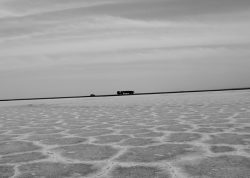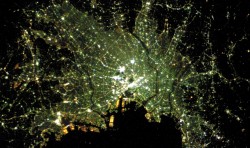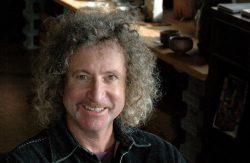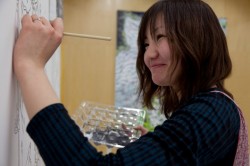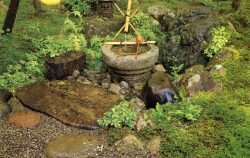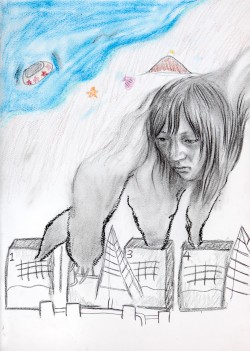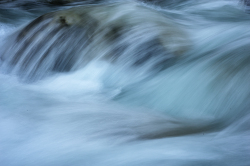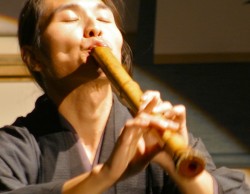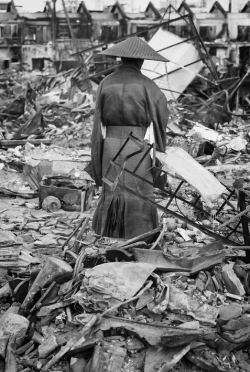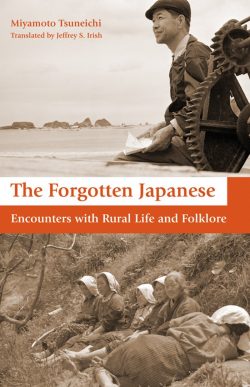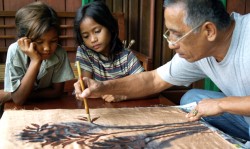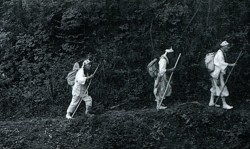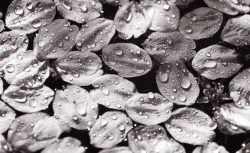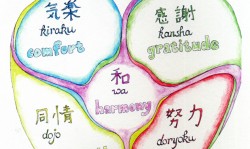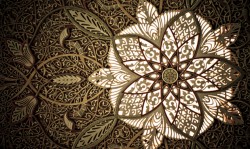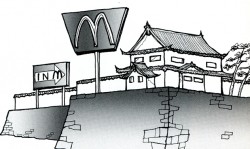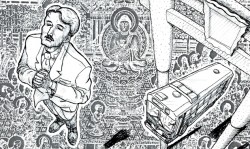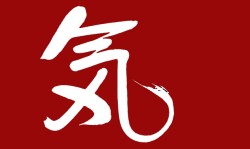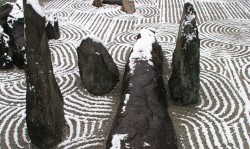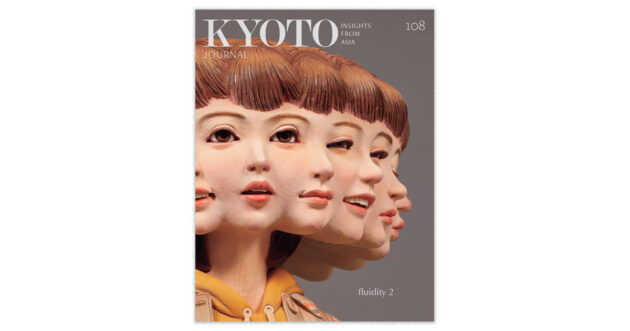Into Dasht-e Kavir: Notes From the Great Salt Desert
I stare at the barren oatmeal, forbidding life, eroded by the elements, its own self-loathing nature…
Read MoreGrow Your Own Energy
In Japan the concept is often called “enerugi no chisan-chisho,” a phrase adopted from the local food movement. It directly translates… loosely as “grow your own energy.”
Read MoreIn Praise of Clay: Robert Yellin muses on the ties that bind art, life and environment
Kyoto ceramic connoisseur Robert Yellin muses on the ties that bind art, life and environment
Read MoreZen & the Art of Rejuvenation
Taizo-in launched its groundbreaking ‘Fusuma-e Project’ in the spring of 2011. The Zen temple is commissioning a young, unknown Kyoto-based artist to compose large sumi-e ink paintings on 64 new sliding doors, or fusuma…
Read MoreThe Epic of Tea: Tea Ceremony as the Mythological Journey of the Hero
TEA
BY DANIEL R. KANE
“Why do you study Tea?” The usual answers perhaps are enough: “It is an aesthetic exercise; a Zen discipline; a unique means of social interaction.” Yet, I have wondered if there might be some other attraction to Tea; something not so apparent…
Read MoreFukushima’s Children
My collaborative artwork with children is based on the principle that they are strongest and most resilient when they are listened to, respected, and encouraged to think creatively. Children often need permission and safety to develop their own ideas about their situation, to make sense of their emotions and express their thoughts…
Read MoreSatish Kumar on Deep Ecology
Sometimes I came across a tree which seemed like a Buddha or a Jesus: loving, compassionate, still, unambitious, enlightened, in eternal meditation, giving pleasure to a pilgrim…
Read MoreHealing Meditation with Shakuhachi
Shakuhachi is often referred to as the “sound of nature.” In Japan, its “original music”(honkyoku) is filled with echoes of forest and sky…
Read MoreAn American Issei
I am the first generation of my family to visit Japan, let alone live here. My wife, who is Japanese, is about the 900th generation of her family to live here…
Read MoreKobe Quake Notes
On a winter dawn the world shrugs
screams begin from below everywhere
and reality does not conform
to earthquake emergency plans
Country Lives
The Japanese ethnologist Miyamoto Tsuneichi (1907-1981) walked more than 100,000 miles, mainly during the 1940s and 50s, gathering reminiscences of rural life from village elders…
Read MoreMorimoto Kikuo: Resurrecting a Cultural Ecology
The Khmer Rouge willfully tried to strip the nation of its rich culture and heritage. The casualty Japanese expat Morimoto Kikuo is trying his hardest to save is Cambodia’s traditional art of silk weaving and dyeing…
Read MoreWalking the Great Ridge Omine on the Womb-Diamond Trail
The Yamabushi are back country Shaman-Buddhists with strong Shinto connections, who make walking and climbing in deep mountain ranges a large part of their practice…
Read MoreOf All the Wild Sakura: The Journals of Gary Snyder
My first stay in Japan was from May of ’56 to August ’57. I left to get a change of air, to reflect on my Zen practice, and to earn some dollars.
Read MoreHeart
The core of kokoro (the heart) is the search for wa (peace or harmony); this search manifests itself in all areas of life…
Read MoreCivilizations never Clash, Ignorance Does
A civilized person is the one who “knows oneself, and tries to learn from others”; the one who knows and respects the difference of cultures; the one who seeks the transversal values of humanity found in all these cultures.
Read MoreThe Emperor Visits MacDonald’s
The nation had just celebrated his 75th birthday the week before, and he had never been to McDonald’s! Billions sold to his loyal subjects…
Read MoreThe First Man-Made Natural Orange and Other Stories
There comes a moment in every commuting man’s life when he has to choose between continuing his career or suddenly stripping naked on the morning bus.
Read MoreKi: The Vital Force
While ki is regularly invoked as an explanatory principle in oriental medicine and martial arts, few practitioners or writers, either Eastern or Western, spend much time intelligibly explaining ki itself…
Read MoreNature and Culture in Japan
Japanese cultural tradition hides a vast storehouse of notions and practices that may be helpful in establishing a culturally-grounded eco-philosophy…
Read MoreKawamura Junko on Noh
“The actor is not moving, but the pose is full of pent-up energy. Think of a spinning top…”
Read More
